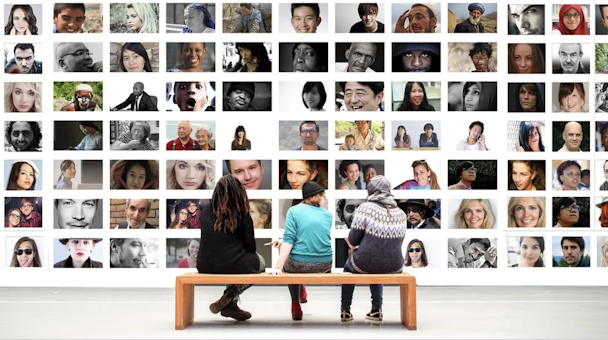Inclusive writing: when words speak as loudly as actions
Diversity and inclusion (D&I) has become better understood in recent years. The Me Too movement, resurgence of Black Lives Matter, and increased visibility for the LGBT+ community have put a spotlight on the need for rapid progress. Rob Heads, analyst at Radley Yeldar, looks at the impact this is having on how organizations interact with customers and employee behavior.

Radley Yeldar on the importance of choosing the right words around diversity and inclusion initiatives.
The change in the platform of diversity and inclusion (D&I) in corporate communications has been monumental. Dedicated areas on corporate websites are now not uncommon and, now that specific D&I disclosures are a legal requirement in reporting, some organizations have decided to create standalone D&I reports. To help communicators wrestling with the rapid change, we’ve pulled together some guidance to help organizations communicate their D&I efforts through more engaging reporting.
In pulling together the report, something interesting leaped at us. Despite the increasing disclosure around D&I, many companies appear to be talking about the issues without feeling sure on the specifics of how they should do it – the content they showcase, the language they use and the tone they strike in both their reporting and corporate communications more generally.
This perhaps isn’t surprising: it’s a nascent and ever-evolving space. But in a world where consumers are showing a preference for inclusive brands and employees are increasingly choosing employers based on their D&I credentials, getting this right is set to have a real impact on corporate reputation.
Inclusive writing
So how can organizations better communicate inclusivity through the words they use? Inclusive writing is the practice of using language that purposefully and proactively reflects an openness to difference, which in turn implies the creation of safe, neutral spaces for everyone to feel welcome. It avoids the use of expressions or words that could be considered exclusionary to anyone regardless of gender, disability, or ethnic background. Inclusive language doesn’t:
- Establish one group of individuals as the norm, for example by calling everyone who isn’t white ‘non-white’
- Use words or terms that imply disabilities when they’re not relevant, such ‘turn a blind eye’ when meaning ‘ignore’
- Refer to control systems or communications with historically-charged language, such as using ‘master/slave’ when there are neutral options available such as ‘primary/secondary’
Hiring and talent
The use of inclusive language may seem frivolous or even ‘woke’ to some, but it has tangible impacts on organizations and their people - words have a direct, if subconscious, impact on who is likely to apply for roles you are listing, for example. The words you choose could inadvertently reduce or restrict the pool of candidates from which you can choose.
Masculine-coded language in job descriptions (such as using words like ‘competitive’, ‘driven’ or ‘dominant’) has been proven to have a direct negative impact on the likelihood of female applicants applying for a role. Such words can also affect broader perceptions of a business and set the tone for how a prospective employee decides if an employer is the right cultural fit. Do the words you use help your business? Do they enhance equality?
Inclusive Writing is also hugely important internally as inclusion is closely linked with engagement. Language shapes our sense of self and impacts our emotional wellbeing directly. Employees that feel included are more engaged and, according to recent studies, more productive.
Getting it right
While there are clear benefits to getting it right, the converse is also true: getting it wrong can be damaging. Neuroscientific research has shown that ‘social’ pain resulting from exclusion or rejection activates the same neural networks in our brain as physical pain. According to BetterUp, even a single incidence of micro-exclusion can create an immediate 25% decline in an individual’s performance.
Unfortunately, this isn’t an exercise that organizations will be able to get right ‘once and for all’. Society is constantly evolving, and our language evolves with us. Organizations will have to continually review and adapt the words they use. So, the biggest lesson is this: rather than focus on developing a set of rules, hone a listening culture that focuses on developing a sense of organizational empathy and awareness. Changing the words you use should become just one part of normal comms life.
Looking for help navigating the world of inclusive writing? Get in touch with us and visit our 'Driving D&I' hub for more practical tips on how to keep your comms inclusive.
Content by The Drum Network member:

Radley Yeldar
Radley Yeldar is an award-winning, independent, London and Birmingham-based creative consultancy. Our 200-strong team of specialists has been helping to create a...
Find out more
